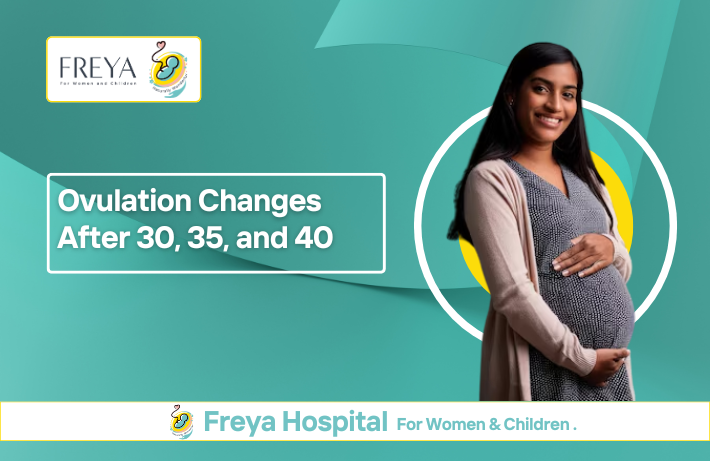As women age, especially after 30, their bodies undergo various changes, including changes in ovulation and fertility. These changes can impact the ability to conceive naturally. Understanding how ovulation changes after 30, 35, and 40 can help women make informed decisions about family planning and reproductive health. Consulting the best gynecologist in Ranchi can provide personalized guidance and support through these changes.
Ovulation and Fertility in the Early 30s
In the early 30s, women generally continue to ovulate regularly, and fertility is relatively strong. However, this is also the age when the gradual decline in the quantity and quality of eggs begins. Women are born with a finite number of eggs, and after 30, egg loss accelerates. While ovulation remains regular for most women, subtle changes in cycle length or ovulation timing may start to appear.
It is important to recognize that although fertility begins to decline after 30, many women in their early 30s conceive without difficulty. Maintaining a healthy lifestyle and regular checkups with the best gynecologist in Ranchi can help ensure reproductive health and early detection of any fertility issues.
Ovulation Changes in the Mid to Late 30s
By the age of 35, both the quantity and quality of eggs decline more rapidly. Ovulation may become less predictable, and the menstrual cycle can shorten or become irregular. Skipped ovulation is also more common in this age group, which can reduce the chances of conception.
This period is crucial as the eggs remaining are more prone to chromosomal abnormalities, increasing the risk of miscarriage and genetic disorders. Women over 35 may also experience a higher prevalence of conditions such as uterine fibroids, ovarian cysts, and endometriosis, which can further impact ovulation and fertility.
For women planning to conceive after 35, consulting with fertility specialists and the best gynecologist in Ranchi is recommended to explore options like fertility testing and treatments that can improve pregnancy outcomes.
Ovulation and Fertility after 40
After 40, ovulation becomes more irregular and less frequent. The ovarian reserve (the number and quality of eggs) is significantly diminished, making natural conception more challenging. Hormonal fluctuations during this period can lead to longer or skipped cycles, and the risk of pregnancy complications also increases.
Perimenopause, the transition phase before menopause, usually starts in the 40s, causing unpredictable ovulation patterns. Pregnancy after 40 is possible but often requires additional medical support and monitoring by an experienced gynecologist.
Women are encouraged to seek advice from the best gynecologist in Ranchi who can provide advanced reproductive care, including assisted reproductive technologies like IVF, to help achieve a healthy pregnancy.
Tips for Managing Ovulation Changes with Age
- Track menstrual cycles and ovulation patterns to identify irregularities.
- Maintain a healthy weight as both underweight and overweight can disrupt ovulation.
- Avoid smoking and excessive alcohol consumption, as these negatively affect egg quality.
- Manage chronic health conditions such as diabetes and hypertension.
- Seek regular gynecological care for timely fertility assessment and interventions.
- Consider fertility preservation options if planning pregnancy at a later age.
Conclusion
Ovulation changes after 30, 35, and 40 reflect the natural aging process of the female reproductive system, with a gradual decline in egg quantity and quality. Awareness and proactive healthcare can make a significant difference in managing these changes and improving the chances of conception. Women experiencing difficulties or wanting to understand their fertility status are advised to consult the best gynecologist in Ranchi for expert guidance tailored to their individual needs. With the right support, healthy pregnancies are achievable even in the later reproductive years.











